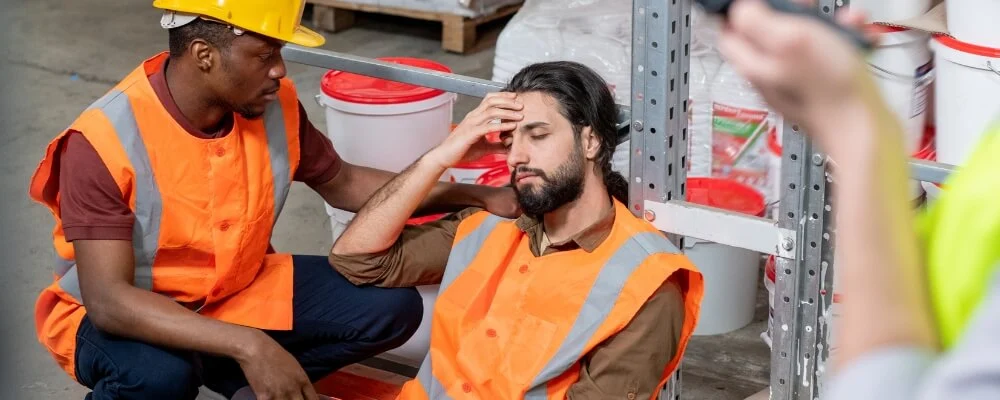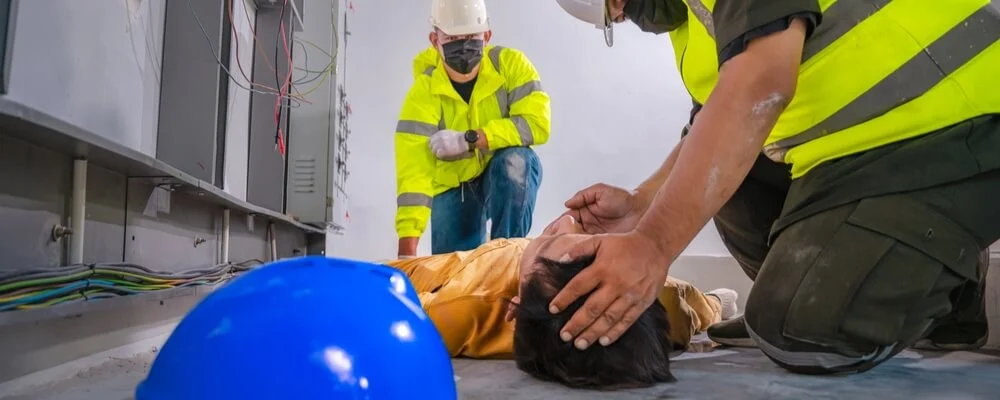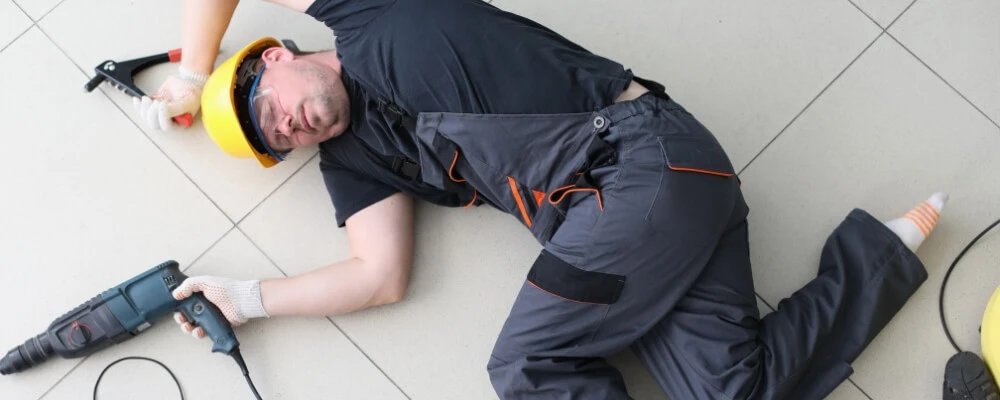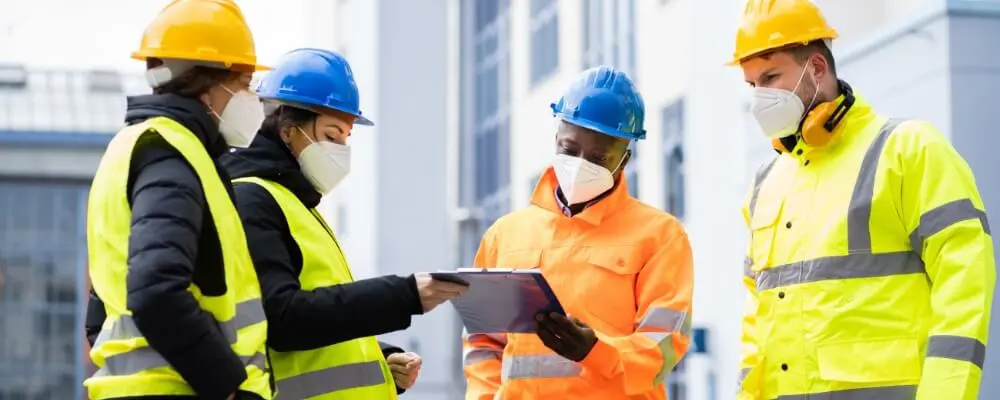Safety can sometimes take a backseat to productivity and efficiency in today’s fast-paced work environments. However, overlooking safety incidents, especially in high-risk industries, can have dire consequences ranging from physical injuries to significant financial losses. While some incidents might seem minor or rare, their potential impact on an organization’s operations, reputation, and bottom line can be substantial.
In this blog, we delve into the 10 most common safety incidents that organizations often neglect, emphasizing the importance of proactive measures and the repercussions of inaction. Whether you’re a seasoned professional or new to the industry, understanding these incidents is crucial for creating a safer, more productive workplace for everyone.
What are Safety Incidents?
Safety incidents refer to events or occurrences in a workplace or other environments that result in harm or potentially cause harm. They can range from actual injuries, illnesses, or fatalities to near misses where an injury did not occur but could have.
These incidents often highlight risks or vulnerabilities in a system, process, or equipment and serve as indicators for areas that need improvement to prevent future harm. Addressing and analyzing safety incidents is crucial for maintaining a safe and healthy environment.

10 Common Safety Incidents You Shouldn’t Overlook
Safety incidents can have serious consequences and should never be overlooked. Here are some common 10 safety incidents that should always be taken seriously:
1. Falls
Falls stands as the most significant threat in the construction world. The gravity of this risk is most evident among specialty trade constructors, such as those engaged in concrete work or foundational tasks. These professionals represent a staggering near-half of all construction-related deaths. The reasons for such falls can range from lack of proper safety equipment, like harnesses, to unsafe working conditions, such as wet or unstable surfaces.
It’s also worth noting that as construction projects grow taller and more complex, the risk of high-altitude falls increases. Therefore, construction sites must have rigorous safety protocols, regular inspections, and training sessions to educate workers about potential hazards and how to safeguard against them.
2. Struck by Objects
The construction environment is rife with tools and materials that can become lethal if not handled correctly. Take, for instance, the seemingly innocuous nail gun. If misused, it can fire nails unintentionally, turning them into deadly projectiles. The alarming number of 402 fatalities in the U.S. in 2010 due to such hazards underscores the importance of proper equipment handling.
Beyond training, it’s also essential to ensure that equipment is regularly maintained and that safety features, like safety guards on saws or protective shields on nail guns, are always in place and functional.
3. Electrocution
The dangers of electrocution extend far beyond the obvious threat of power lines. One of the lesser-known but equally deadly risks is the arc flash. This phenomenon occurs when there’s a short circuit, leading to a rapid release of energy that can produce a molten gas cloud with extreme temperatures. The immediate vicinity can become a danger zone, with workers at risk of severe burns or be caught in an explosion.
To combat this, adherence to lockout/tagout standards is crucial. This ensures that electrical equipment is properly shut off during maintenance or repair. Additionally, wearing fire-resistant clothing can provide an added layer of protection against the intense heat of an arc flash.

4. Caught In/Between
While essential to many construction projects, trenching and excavation comes with its own set of perils. The very nature of digging deep into the earth creates an environment where walls can collapse, trapping workers inside. Such cave-ins are unpredictable; even seemingly stable earth can give way without warning.
The CDC’s cautionary note on cave-ins’ unpredictability highlights the importance of always being prepared. This preparation includes ensuring that trenches are properly shored up, workers are trained to recognize signs of potential collapse, and there’s always a means of quick escape should the worst happen.
5. Working Alone
The modern workforce is increasingly mobile and independent, leading to a rise in individuals working alone. In countries like Canada, the U.S., and Europe, this represents 15% of all workers. In the context of construction, this can be particularly hazardous. A worker in a remote part of a large site might face an emergency, like an injury or equipment malfunction, and be out of earshot or sight of colleagues.
This isolation can delay rescue or assistance, turning minor incidents into major crises. As such, it’s vital to have protocols for regular check-ins, emergency communication devices, and training to ensure that lone workers are never alone in the face of danger.
6. Cutting Corners
The allure of saving time or reducing costs often tempts individuals to cut corners, especially in high-pressure situations. However, these shortcuts can have dire consequences in high-risk environments like construction sites or manufacturing plants. A skipped safety check, an overlooked maintenance routine, or the use of substandard materials can lead to catastrophic failures, endangering lives. The ripple effects of such decisions can be vast, affecting not just the individual involved but also their colleagues, the project’s integrity, and the company’s reputation.
A safety culture must be prioritized, where every step, no matter how time-consuming or costly, is taken to ensure the well-being of all involved. This can be achieved through clear communication, rigorous training, and strict adherence to established safety protocols.

7. Improper Training
Training is the backbone of safety. Workers navigate a minefield blindfolded without thoroughly understanding equipment operation, safety procedures, and risk assessment. Improper or inadequate training can lead to equipment misuse, which reduces efficiency and increases the chances of malfunctions or accidents.
Furthermore, workers not well-versed in safety protocols might unknowingly place themselves or their colleagues in harm’s way. To combat this, employers must invest in regular, comprehensive training sessions that are updated to reflect the latest safety standards and equipment innovations.
8. Inadequate Personal Protective Equipment (PPE)
PPE is the last line of defence between a worker and potential hazards. The right PPE is crucial, whether it’s a helmet to protect against falling objects, gloves to guard against chemical exposure, or harnesses to prevent falls. However, if workers are provided with ill-fitting, damaged, or inappropriate PPE, it’s almost as if they have no protection.
Employers are responsible for ensuring every worker has access to the right PPE, understands its importance, and uses it consistently. Regular checks and timely replacements are also essential to ensure that the PPE remains effective.
9. Poor Communication
In the intricate dance of a busy workplace, communication is the rhythm that keeps everyone in step. A missed message, unclear instruction, or a lack of feedback can lead to errors, misunderstandings, and, in worst-case scenarios, accidents.
Especially in high-risk environments, where the margin for error is razor-thin, clear communication channels are paramount. This includes ensuring that instructions are understood, feedback loops are established, and a culture of open dialogue where concerns and observations can be freely shared.
10. Lack of Emergency Protocols
Accidents can happen even with the best precautions. When they do, the difference between a bad and tragic situation often lies in the response. Without clear emergency protocols, chaos can ensue, leading to delays in providing critical aid or even exacerbating the situation. It’s essential that every workplace, especially high-risk ones, have well-established and practised emergency response procedures.
This includes regular drills to ensure every worker knows their role in an emergency, clear signage indicating evacuation routes and emergency equipment, and continuous training to keep everyone updated on the best response strategies.

Consequences Of Ignoring Safety Incidents
Ignoring safety incidents in any environment, especially in workplaces with inherent risks, can lead to negative consequences. Here’s an exploration of the repercussions of overlooking such incidents:
- Physical Harm and Fatalities: The most immediate and devastating consequence of ignoring safety incidents is the potential for severe injuries or even death. When safety concerns are not addressed, accidents increase, endangering workers’ lives and anyone nearby.
- Decreased Worker Morale: When employees feel that their safety isn’t a priority, their morale and trust in the organization can plummet. A demotivated workforce can decrease productivity, absenteeism and higher turnover rates.
- Legal Repercussions: Organizations can face lawsuits, fines, and penalties for failing to adhere to safety regulations. Legal actions can be costly, time-consuming, and severely damage a company’s reputation.
- Financial Implications: Beyond legal fines, the financial costs of ignoring safety incidents can be vast. These might include compensation for injured employees, increased insurance premiums, equipment repair or replacement, and potential downtime during investigations or repairs.
- Reputation Damage: In the age of instant communication, news of safety incidents can spread rapidly. A company known for neglecting safety can suffer a damaged reputation, leading to lost business opportunities, difficulty attracting talent, and strained relationships with stakeholders.
- Reduced Operational Efficiency: Accidents can damage equipment or shutdowns, requiring repairs or replacements. This can disrupt operations, leading to missed deadlines, increased costs, and reduced overall efficiency.
- Increased Insurance Premiums: Insurance providers might deem companies with a history of safety incidents high-risk. This can result in increased premiums or even difficulty in securing coverage.
- Training and Recruitment Challenges: Organizations with poor safety records may struggle to attract and retain talent. Additionally, they might need to invest more in training to address safety concerns, further straining resources.
- Mental and Emotional Impact: Apart from physical injuries, safety incidents can have lasting psychological effects on those involved. This can manifest as post-traumatic stress, anxiety, or depression, affecting the overall well-being of employees.
- Regulatory Scrutiny: Repeated safety incidents can draw increased attention from regulatory bodies. This can result in more frequent inspections, audits, and a tighter regulatory leash, making operations more challenging.
In conclusion, ignoring safety incidents is ethically questionable and has a broad spectrum of negative implications for an organization. Prioritizing safety is a moral duty and a sound business strategy.
Conclusion
Safety must always lead the way in the intricate dance of modern industries. The “10 Common Safety Incidents You Shouldn’t Overlook” underscores the importance of vigilance, proactive measures, and continuous training in ensuring a secure work environment. Ignoring or downplaying these incidents can have cascading effects, from immediate physical harm to long-term reputational damage.
As we navigate the challenges of our respective fields, let’s prioritize safety as a regulatory requirement and as a moral and ethical responsibility to our colleagues, stakeholders, and ourselves. After all, a safe workplace isn’t just about avoiding accidents; it’s about fostering trust, ensuring sustainability, and building a foundation for enduring success.

